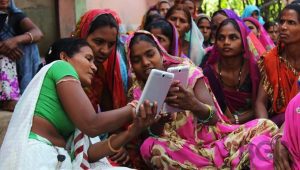Indian Women Have Greater Voice in Households But Less Property Ownership
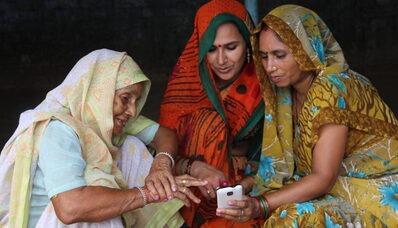
More women are engaging in making decisions within their households, are owning and using bank accounts and mobile phones which reflects greater agency that they are able to exercise. However, fewer women are now owning property either jointly or alone (land and house) than in 2017 in several states across India, according to data from the first phase of the latest round of National Family Health Survey (NFHS-5) released by the Government of India in December 2020. The data released for 22 states and Union Territories (UT) of India, also shows that more rural women have ownership of land and property than their urban counterparts.
To understand how rural and urban women exercise their agency, the wide variations between them and how this has changed over the years, we analysed four indicators in the NFHS— 1. Women who participate in three household decisions 2. women owning a house and /or land (alone or jointly with others) 3. women having a bank or savings account that they themselves use 4. women having a mobile phone that they themselves use.
Data for the above four indicators was released for 21 states and UTs while data for others indicators is for 22 states and UTs.
Greater Agency At Home
Women are now participating more in household decision making according to the latest data from NFHS-5. Women from north-eastern states of India, particularly Nagaland and Mizoram, are exercising greater agency within the households. Almost every woman, especially in rural Nagaland, reported she had a greater say in decision making at home. More women in Bihar( 86.5%) are able to have a greater voice at home now since the last survey.

According to the NFHS, women are considered to participate in household decisions if they make decisions (alone or jointly with their husband) about their own healthcare, major household purchases, and visits to the woman’s family or relatives. Previous studies across the world have shown that women’s autonomy in decision making is positively associated with increased education, employment and even the number of children born. Ajeet Kumar and Nalin Negi’s analysis of the NFHS-3 survey, also examines the influence of age, occupation and education on women’s decision-making power at home.
Women in Ladakh, however, reported having reduced agency in household decision making among other states. 20% of women said they had no bargaining position. Southern states, where women are considered to have more agency fared worst among the states whose data has been released so far. Only 82% women in Karnataka and 84% in Andhra Pradesh reported having a stake in decision making at home.
More rural women reported to have greater say in decision making than urban women in some states. 94% of rural women in Sikkim are able to have their voices matter in decision-making compared to only 80% of urban women. Rural women in Andhra Pradesh, Bihar, Goa and Kerala reported a greater voice in households than their urban counterparts.
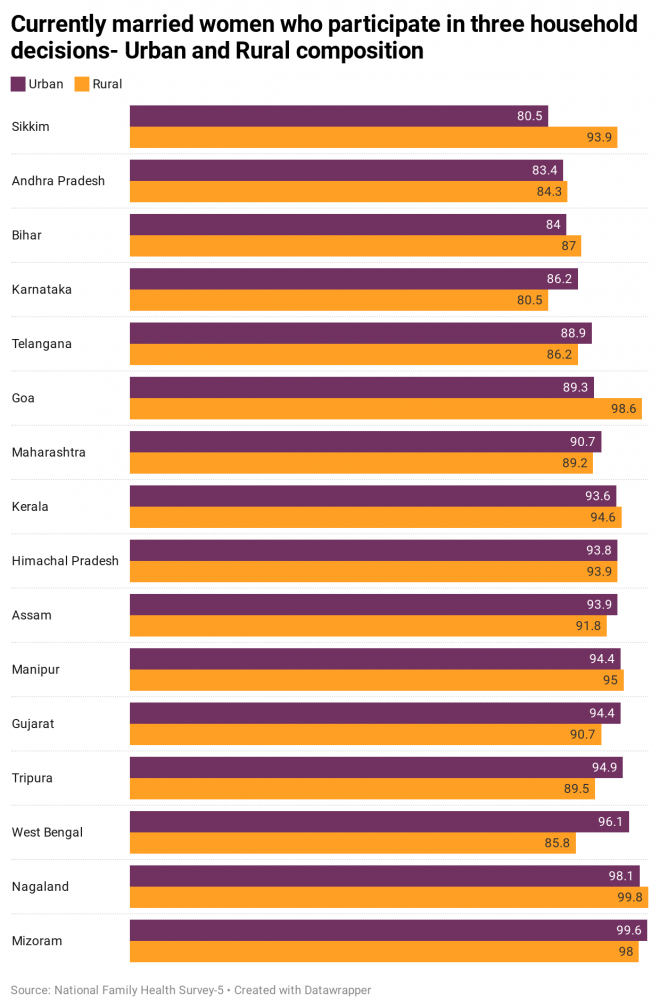
Data from NFHS-4 (2015-16) suggests that participation of women in household decision making increases slightly with greater household incomes but not much with the education of women. Data disaggregated by age, schooling and other significant factors related is yet to be released in the latest round of NFHS.
Fewer Women Own Property
Alarmingly, fewer women now own land or property either on their own or jointly in India since the last survey in 2015-2016. Women in more than half of 21 states and UTs report a decline in property ownership. Tripura reported the sharpest drop. Only 17.2% women said they own property now as compared to NFHS-4 where 57.3% of Tripura’s women owned land or a house. Fewer women in states like Maharashtra, Goa, Nagaland and Kerala reported owning land and/or property.
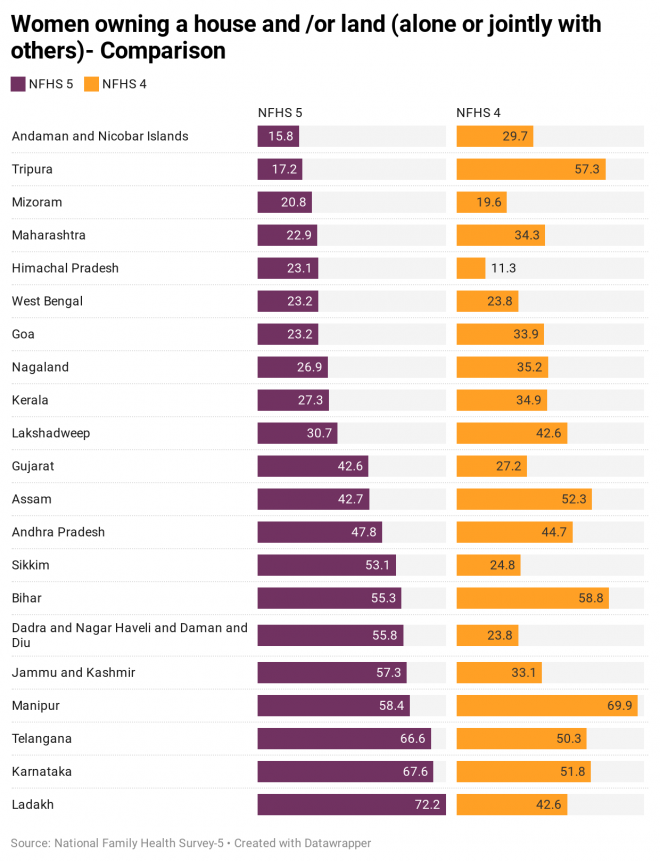
Studies show that the increased ability of women to control resources can confer a long-term reduction in fertility, increased investment in children’s education, health and nutrition, and improvement in workforce participation. Improved inheritance rights also led to a decrease in both family and non-family violence against women in India. An amendment to the Hindu Succession Act (1956) was passed in 2005 to give equal rights to Hindu, Buddhist, Jain and Sikh women to inherit their parents’ ancestral property.
Union territories of Jammu and Kashmir, Ladakh, and Dadra and Nagar Haveli and Daman Diu saw a notable increase of women property owners. 72.2% of women in Ladakh own property, the highest among all the states and UTs for which data has been released so far. In Sikkim, more than half (53.1%) the women were sole or joint owners of property. Significantly, the number of women property owners also doubled between the two surveys in the state. Women property owners also increased from 27% in 2015-2016 to 42.6% in 2019-2020 in Gujarat.
More women in southern states of Karnataka and Telangana had ownership over property among all the states for which data has been released. Nearly 70% of rural women of Karnataka own a house and/or land.
In 14 states, more rural women than urban women owned land and property than their urban counterparts. Mizoram has the sharpest divide, where twice as many rural women were owners of property. In Telangana, 74.5% of rural women own a house and/or land as compared to only 53.9% of urban women. In Andhra Pradesh every second rural woman reported to be an owner of property.

While the latest data released by NFHS-5 does not provide the disaggregated details of women owning land and houses, past data from NFHS-4 suggests that the more women are likely to own a house (37%) than land (28%) across India. More Scheduled Tribe women (40%) are likely to have a sole ownership of property, followed by women from other backward castes (38%) and Scheduled Castes (36%).
The last round of data also indicates that women’s ownership of property declined with education and wealth.
More Women Own Bank Accounts and Use Themselves
More women now own a bank account that they operate themselves according to the latest NFHS data. More than three-quarters (76.7%) of women in Bihar now have bank accounts as compared to a quarter of them in the previous round of the survey.
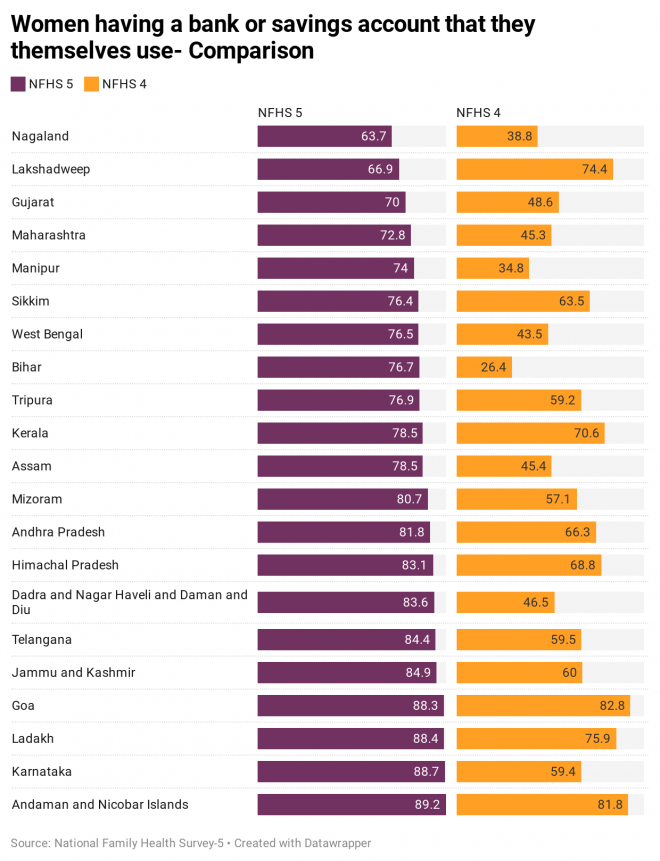
88.7 % of women have bank accounts in Karnataka, a massive rise from 60% in 2017. In 12 states, more urban than rural women had bank accounts. 9 out of 10 urban women in Karnataka have a bank account. In Goa, 92.4 % of rural women have bank or savings accounts that they use for themselves. The
Nagaland has the lowest percentage of women who own bank accounts ( 63.7 %) and the highest divide between rural and urban bank account holders. 80% of urban women had bank accounts compared to 55% rural women.
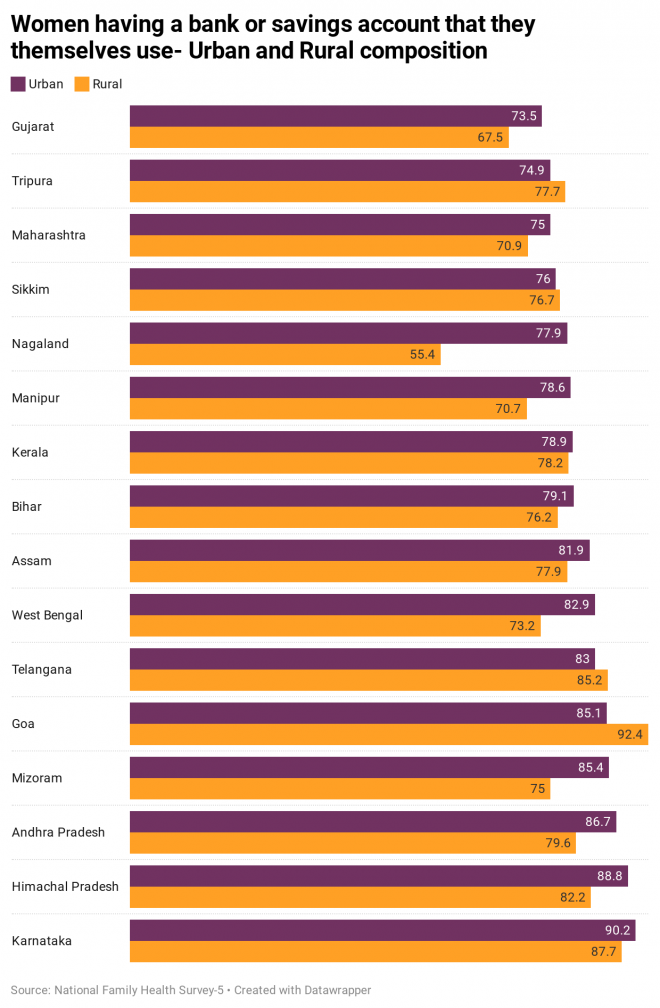
The data from the previous NFHS survey gives us insights on access to microcredit, which is yet to be made available from the most recent survey. NFHS-4 indicates that women’s use of microcredit programmes increases with age, in both rural and urban areas but declines with more years of schooling.
Several studies indicate the gender gap in formal finance. Women not only having lower access to banking services than men, but also face direct discrimination by banks through higher interest rates. Although after Jan Dhan Yojana, the number of the women who own bank accounts has increased significantly, the usage remains low.
Half of Gujarat’s Women Don’t Own Mobile Phones
As with bank accounts, more women now own mobile phones that they themselves use. However, the variation between the states is huge. More than 90% women in Goa and 97% of urban women in Sikkim own and use a mobile phone.
However, less than half of women in Gujarat (48.8%) and Andhra Pradesh (48.9 % ) are mobile phone users. Women in West Bengal (50%), Maharashtra (55%) and Telangana (60%) are some of the other states at the bottom of the table on access to mobile phones.
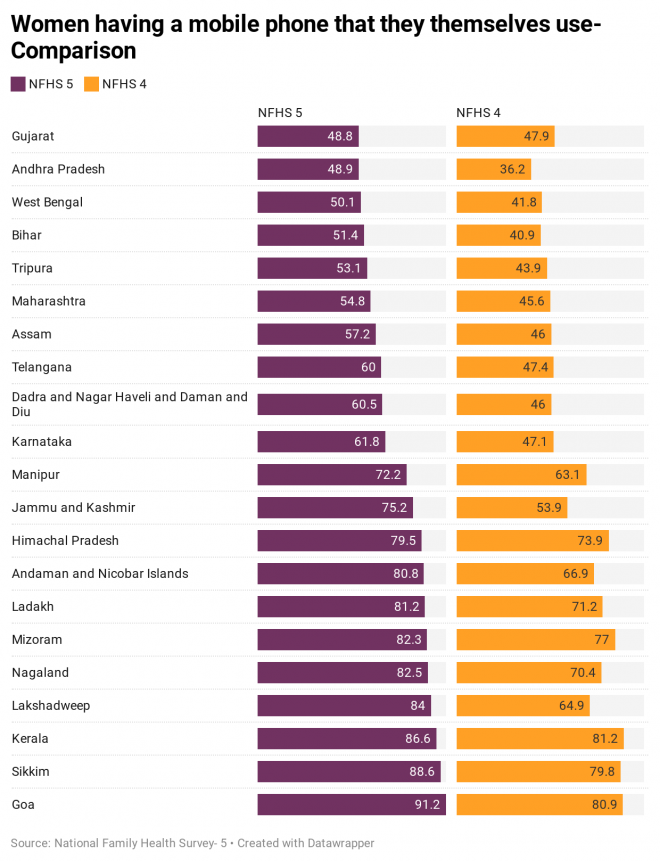
There is a glaring divide between mobile phone usage among rural women and urban women across states and UTs. Twice as many urban women in Gujarat have mobile phones. Bihar and Andhra Pradesh are other states where the divide is visible. Only in Kerala, Andaman and Nicobar Islands and Ladakh. rural women owning phones is marginally higher.
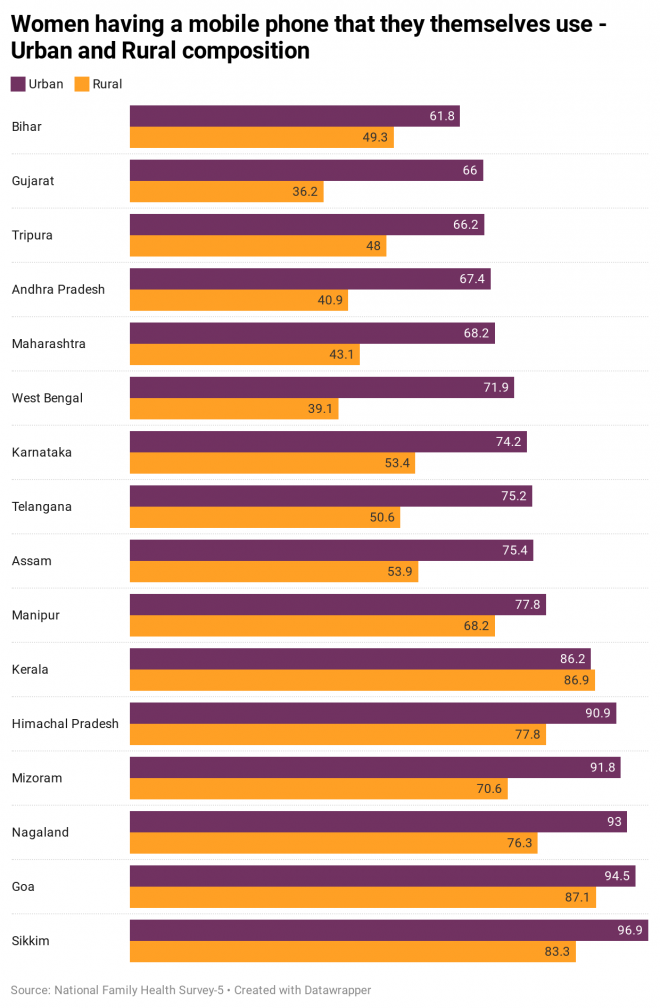
Women Land Rights, Gender Digital Divide, Leadership, Violence
Against Women
We believe everyone deserves equal access to accurate news. Support from our readers enables us to keep our journalism open and free for everyone, all over the world.
